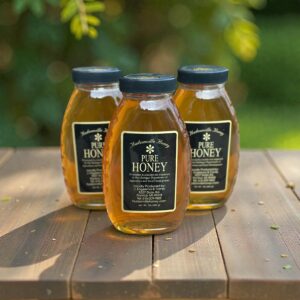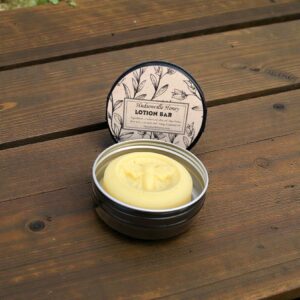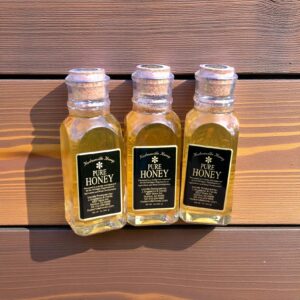We are often asked by customers, friends and family “What can I do to help honey bees and their keepers, short of being a beekeeper myself?” One suggestion of course is to buy honey from your local beekeeper, a suggestion we’ve discussed on this blog before.
If you happen to be a home owner, another suggestion is to create honey bee forage opportunities in your yard by strategic plantings. West Michigan’s vibrant landscapes and changing seasons offer a unique canvas for homeowners to create honeybee-friendly yards. As we celebrate the crucial role honeybees play in pollination and ecological balance, here are some plantings tailored to the West Michigan climate that will not only beautify your yard but also support these essential pollinators.
- Lavender (Lavandula angustifolia):
Known for its fragrant blooms and drought tolerance, lavender is a bee favorite. Planting this aromatic herb in sunny, well-drained areas not only attracts honeybees but also adds a touch of elegance to your landscape. - Coneflowers (Echinacea purpurea):
With their striking purple petals, coneflowers are a native perennial that thrives in West Michigan. These flowers provide abundant nectar, attracting not only honeybees but also butterflies and other beneficial insects. - Bee Balm (Monarda spp.):
True to its name, bee balm is a magnet for bees. This native plant produces vibrant, tubular flowers in shades of pink, red, or purple. Its aromatic leaves also repel pests, making it a win-win for your garden. - Wild Bergamot (Monarda fistulosa):
Another member of the Monarda family, wild bergamot, is a native wildflower that bees adore. Its unique lavender-pink blooms add a touch of wild beauty to your yard while providing a rich source of nectar. - Blueberry Bushes (Vaccinium spp.):
Not only do blueberry bushes offer delicious fruit for you, but they also attract honeybees with their delicate blossoms. These bushes thrive in West Michigan’s acidic soil and are a great addition to any bee-friendly yard. - Tulip Poplar Tree (Liriodendron tulipifera):
For larger yards, consider planting a tulip poplar tree. Its tulip-shaped flowers produce ample nectar, attracting honeybees and providing a majestic focal point in your landscape. - Goldenrod (Solidago spp.):
Contrary to popular belief, goldenrod is not a cause of allergies but a valuable late-season food source for bees. Planting this native wildflower adds a burst of yellow to your yard and sustains honeybees through the autumn months. - Apple Trees (Malus spp.):
If space allows, apple trees are not only a delightful addition to your yard but also a fantastic resource for honeybees. Their fragrant blossoms in spring beckon bees for pollination. Other types of fruit trees such as cherry as also excellent, and beautiful when blooming. - Sunflowers (Helianthus annuus):
Bring the sunshine to your yard with sunflowers. These cheerful blooms, available in various sizes and colors, are a favorite among honeybees and provide abundant pollen and nectar. - Crocus (Crocus spp.):
For early spring color, plant crocuses. These small but mighty flowers offer an essential food source for honeybees emerging from winter.
By incorporating these honeybee-friendly plantings into your West Michigan yard, you not only create a visually stunning landscape but also contribute to the well-being of these vital pollinators. Let your yard buzz with life, echoing the natural harmony that characterizes this beautiful region.
Cynics among us might chuckle and note that you planting a few bee friendly plantings in your yard will have negligible impact on creating a more pollinator friendly habitat. That may be true on a quantitative perspective, but what if you take the initiative to create pollinator friendly habitat in your yard, and then take your friends and family in your yard on a nice spring day when the trees are blooming and show them the happy bees foraging in your yard. What if they in turn follow your lead and do the same to your yard. What if in the future, our sprawling ever increasing suburban landscape was inundated with pollinator friendly plantings rather than green mono turf? If this is going to happen, somebody has to be first, right?






